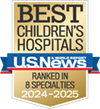
Kids and Head Lice
Posted: September 14, 2012If you have a child in school, you may have gotten the dreaded letter about head lice in the class. Lice can be common in children, but there are things parents can do to prevent their child from getting them. We talked to Dr. Kip Frizzell, local pediatrician and director of the Coordination of Care for Le Bonheur Children's Hospital. Here's what he had to say.
"Head lice are ectoparasites, meaning that they live on or within the skin rather than inside the body. They are mostly common among preschool and school age-children and they are very contagious. Having head lice has nothing to do with a child's hygiene or the cleanliness of their household. Despite these being the facts, in many instances the parent and the child feel embarrassed for having it.
An adult head louse is tan or grayish white and about the size of a sesame seed. The eggs are located at the base of the hair strand and are colored to match the color of the hair. This is why lice are so hard to see. The hatched eggs are much easier to see because they become white in color. Usually, it's easier to see the eggs at the nape of the neck or behind the ears.
Lice can't live away from a host for more than 24 hours and cannot jump from one person's head to another. Transmission is usually from direct head to head contact or from kids sharing things such as hats, coats, pillows or clothing.
The best prevention is to be informed about any outbreaks of lice. If your child has been exposed, check them daily looking closely around the neck, ears and individual hairs. If you notice that lice are there, it's best to call the pediatrician for treatment options.
It is important to understand that lice aren't caused by bad hygiene. Many of the parents I see are embarrassed about having it. Don't be; lice are just a pesky, really contagious problem that many, many people have to deal with."



